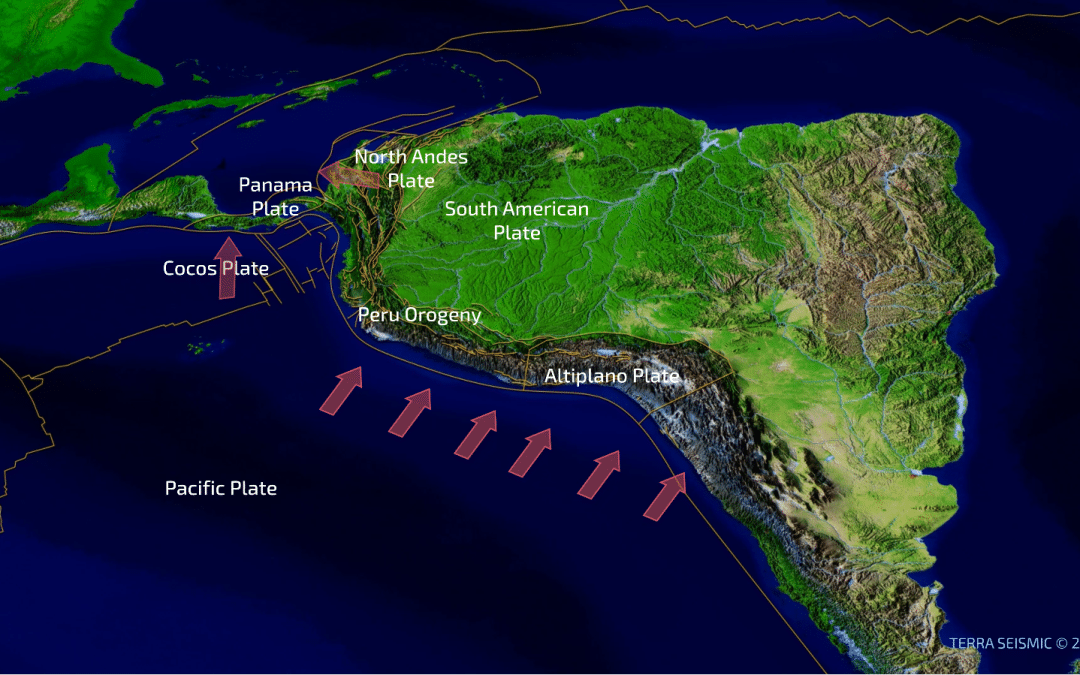Seismicity in Peru is primarily defined by its location on the boundary of the Nazca Plate and the South American Plate, which interact through a subduction process. This geological setup places Peru in a highly seismic zone along the western edge of South America, part of the Pacific “Ring of Fire.”
Subduction of the Nazca Plate: The Nazca Plate is subducting beneath the South American Plate along Peru’s coastline. This subduction is the primary source of seismic activity in the region and can produce very powerful megathrust earthquakes, which can generate tsunamis.
Megathrust Earthquakes: These are the most powerful types of earthquakes generated in subduction zones and have been responsible for some of Peru’s most devastating seismic events, such as the 1970 Ancash earthquake.
Deep and Intermediate-Focus Earthquakes: Due to the angle at which the Nazca Plate subducts beneath the South American Plate, earthquakes in Peru can occur at various depths, including deep and intermediate levels, affecting wide areas.
Crustal Earthquakes: Besides the subduction-related seismic activity, Peru also experiences crustal earthquakes due to faults within the South American Plate. These earthquakes tend to be shallower but can still cause significant damage.
Active Fault Systems: Numerous active faults in Peru, such as those in the Andean region, contribute to seismic risks. These faults are stressed by the subduction process and the deformation of the continental plate.
Historical Seismicity: Peru has a long history of significant earthquakes, which provide valuable data for seismic hazard assessments and influence building regulations and urban planning. These events have also shaped Peru’s approaches to disaster readiness and response.
Volcanic Activity: The subduction process also involves volcanic activity along the Andes mountain range. Volcanic earthquakes are an additional hazard in the southern regions of Peru.
Tsunami Risk: Peru’s coastal regions are at risk for tsunamis, especially following large offshore earthquakes. Tsunami preparedness and warning systems are critical components of the country’s disaster response infrastructure.
Seismic Monitoring and Building Codes: Peru has developed an extensive seismic monitoring network and has implemented stringent building codes designed to withstand earthquakes, particularly in urban areas like Lima.
These factors combine to create a complex and active seismic environment in Peru, necessitating ongoing vigilance, preparedness, and adaptation to mitigate the impacts of earthquakes and associated hazards.

